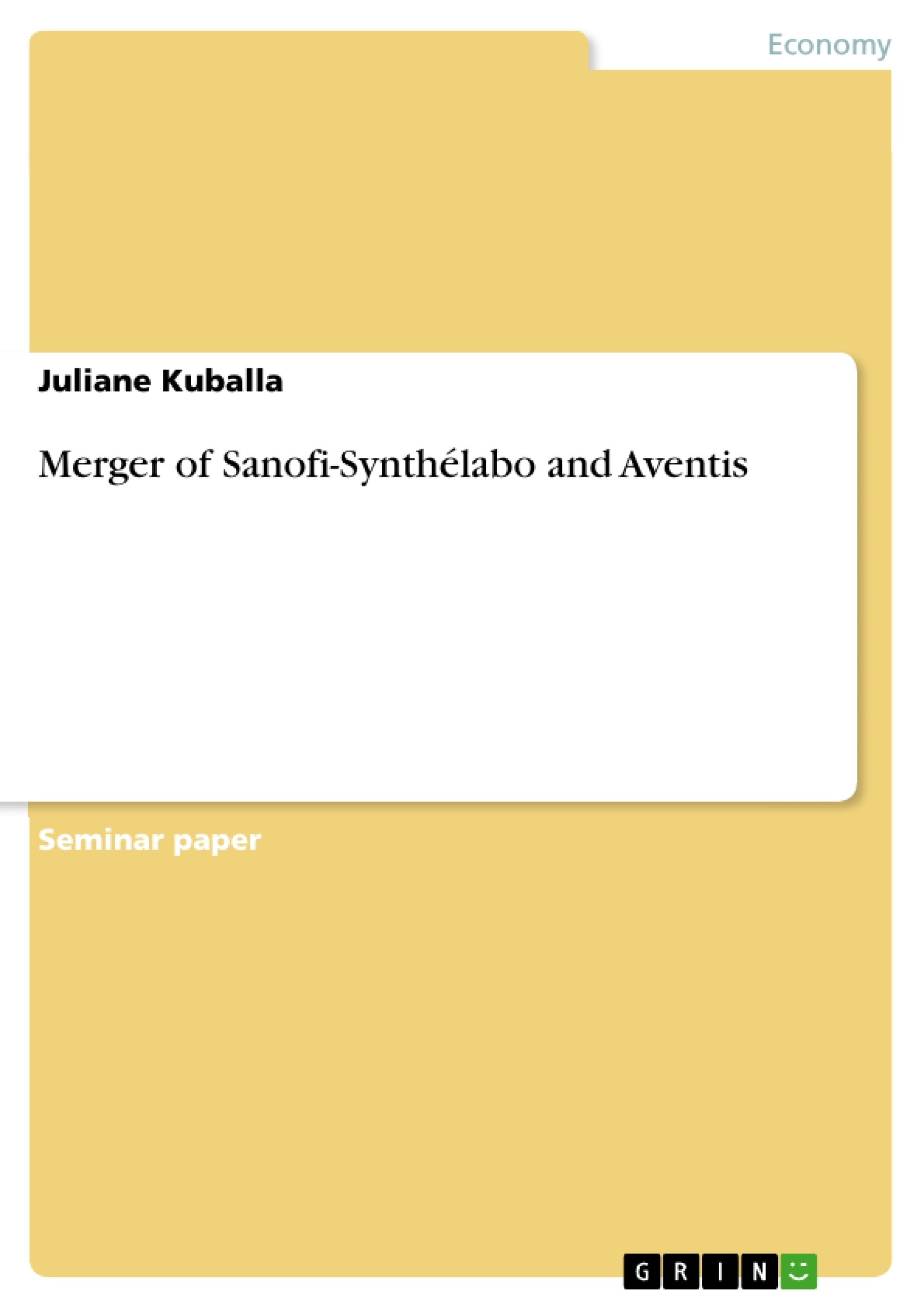In the first part, this academic assignment provides general information about motives for international acquisitions. Moreover, it discusses whether foreign exchange markets and stock markets can be said to be efficient.
The second part critically analyses the Merger of Sanofi-Synthélabo and Aventis by examining the following aspects:
- market position of each company prior to the merger
- motives for the proposed merger
- attack and defence tactics applied by Sanofi-Synthélabo and Aventis
- methods used to finance the merger
- share price movements immediately before during and after the proposed take-over (commenting on the benefits to shareholders of each company)
- company performance in the period following the take-over (reflecting on the initial take-over motives)
Inhaltsverzeichnis (Table of Contents)
- Motives for international acquisitions
- Strategic motives
- Market motives
- Economic motives
- Personal motives
- Particularities in international acquisitions
- Efficiency of foreign exchange and stock markets
- Efficiency of foreign exchange markets
- Efficiency of foreign stock markets
- Market position of Sanofi-Synthélabo and Aventis prior to the acquisition
- Sanofi-Synthélabo
- Aventis
- Motives for the acquisition of Aventis by Sanofi
- Increased market share in the United States
- More power in the whole pharmaceutical market
- Fear of generic drugs
- Cancellation of shares
- Undervaluation of Aventis shares
- Cutting costs
- Attack and defence tactics applied by Sanofi-Synthélabo and Aventis
- First hostile takeover bid of Sanofi-Synthélabo
- Defence tactics of Aventis and agreement to merge
- Second friendly offer
- Methods used to finance the merger or acquisition
- Cash alternative
- Paper offer
- Share price movements immediately before during and after the proposed take-over
- Reactions to rumours of a forthcoming merger
- Responses to the first official offer
- Effects on the acceptance of the second friendly bid
- After the definite finish of the merger
- Company performance in the period following the merger
- Effects on the main shareholders
Zielsetzung und Themenschwerpunkte (Objectives and Key Themes)
This assignment examines the merger of Sanofi-Synthélabo and Aventis, exploring the motives behind the acquisition and the strategic and economic factors influencing the deal. It delves into the market positions of both companies before the merger, the tactics employed during the acquisition process, and the financial mechanisms used to finance the deal. The assignment also analyzes the impact of the merger on share prices and subsequent company performance.
- Motives for international acquisitions
- Efficiency of foreign exchange and stock markets
- Strategic and economic factors influencing mergers and acquisitions
- Market dynamics and competitive advantage in the pharmaceutical industry
- The impact of mergers on share prices and company performance
Zusammenfassung der Kapitel (Chapter Summaries)
- Chapter 1: Motives for International Acquisitions This chapter explores the various motivations behind international acquisitions, outlining strategic, market, economic, and personal motives. It examines the importance of achieving synergy effects, extending core competencies, and gaining competitive advantages in new markets. The chapter also discusses the benefits of acquiring established companies in saturated markets and leveraging national differences in skills and resources.
- Chapter 2: Efficiency of Foreign Exchange and Stock Markets This chapter examines the efficiency of foreign exchange markets and stock markets. It explores how market efficiency can influence international acquisitions, particularly in terms of pricing and valuation.
- Chapter 3: Market Position of Sanofi-Synthélabo and Aventis prior to the Acquisition This chapter provides an overview of the market positions of Sanofi-Synthélabo and Aventis prior to their merger. It examines their respective strengths, weaknesses, and competitive landscapes within the pharmaceutical industry.
- Chapter 4: Motives for the Acquisition of Aventis by Sanofi This chapter delves into the specific motives behind Sanofi-Synthélabo's acquisition of Aventis. It discusses the pursuit of increased market share in the United States, the desire for greater power in the pharmaceutical market, and the need to counter the threat of generic drugs. The chapter also examines the potential for cost-cutting and the perceived undervaluation of Aventis shares.
- Chapter 5: Attack and Defence Tactics Applied by Sanofi-Synthélabo and Aventis This chapter analyzes the tactics employed by both companies during the acquisition process. It examines Sanofi-Synthélabo's initial hostile takeover bid, Aventis's defence strategies, and the eventual agreement to merge. The chapter also explores Sanofi-Synthélabo's subsequent friendly offer.
- Chapter 6: Methods Used to Finance the Merger or Acquisition This chapter outlines the methods used to finance the merger, focusing on the cash alternative and the paper offer.
- Chapter 7: Share Price Movements Immediately Before, During, and After the Proposed Take-over This chapter analyzes the impact of the proposed merger on share prices. It examines the reactions to rumors of a forthcoming merger, the responses to the initial offer, and the effects on the acceptance of the second friendly bid. The chapter also examines share price movements after the completion of the merger.
Schlüsselwörter (Keywords)
This assignment revolves around the key concepts of international acquisitions, mergers and acquisitions (M&A), strategic motives, market dynamics, economic factors, efficiency of foreign exchange markets, the pharmaceutical industry, competitive advantage, and shareholder value. It also explores the role of hostile takeovers, defensive strategies, and merger financing methods.
- Quote paper
- Juliane Kuballa (Author), 2006, Merger of Sanofi-Synthélabo and Aventis, Munich, GRIN Verlag, https://www.grin.com/document/66931



